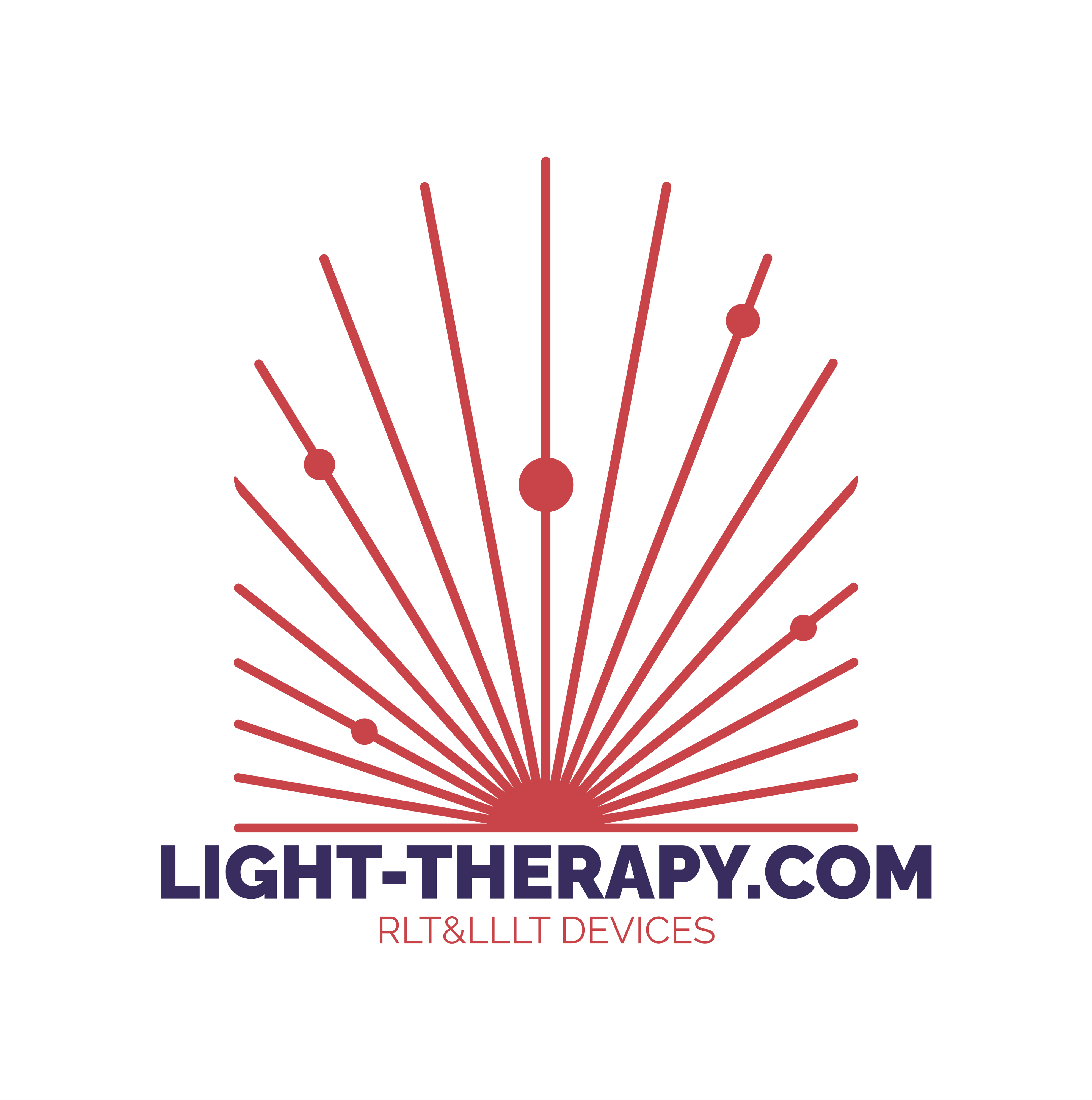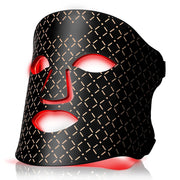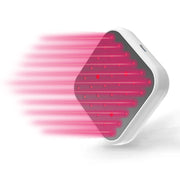In the same way that people seek safe, natural non-medical treatments for illness and injury, many horse owners are interested in red light therapy and other alternatives to drugs and surgical treatments for their equine friends. Red light therapy could enable them to use the same healing wavelengths that effectively treat numerous human health conditions to help their horses heal faster and maximize performance.
In competitive horses especially, leg and back injuries are common and healing can be challenging and costly. Prolonged healing and forced rest can cause a ripple effect of physical and psychological problems for the horse that can delay or prevent a return to competition—and veterinary bills can easily run into the thousands of dollars.
Red light therapy with LED lights has been used to improve human health with great success. An increasing number of veterinarians (especially those with a holistic approach) and animal naturopaths are using red and near-infrared (NIR) light therapy on dogs and horses.
Today, horse owners can administer red light therapy at home. Consistent application provides support for the body’s natural healing mechanisms, which in turn speeds up treatment of conditions such as:
- Joint pain (from osteoarthritis, or overuse injury that has led to cartilage degradation),
- Wounds,
- Connective tissue injuries (sprains and strains of ligaments and tendons),
- Muscle injuries (strains and tears),
- Cartilage degradation (caused by osteoarthritis or overuse),
- Muscle recovery from training,
- Back pain,
- Inflammation,
- Neuropathy and neuropathic pain.
Most conditions that keep horses stuck in a stall, whether acute (sudden) or chronic (long-term), can be treated and potentially even prevented using regular treatments with red and NIR light therapy.
What Is Red Light and How Can It Help a Horse?
Red light therapy is also known as low-level light therapy (LLLT) or photobiomodulation. It encompasses visible red light, which ranges from 630 to 660 nanometers (nm); and NIR light, which is just outside the range of visible light for humans and ranges from 810nm to 850nm.
Light wavelengths within these ranges are said to be within the “therapeutic window,” in which there are significant benefits without any adverse reactions or side effects.
Red light therapy is administered via light-emitting diode (LED) bulbs, which are placed at the shortest possible distance from one another on a panel to ensure the most even coverage.
When you see the term “LED therapy,” be sure you understand which wavelengths it’s referring to. Some LED panels, for instance, emit blue and amber light as well as red/NIR. Although these are suitable for human skin conditions, they typically don’t penetrate deeply enough to provide benefits for deep tissue injuries or healing.
Only specific wavelengths (namely red/NIR) have shown therapeutic benefits for deep tissue and wound healing.
Since horses are large and have a relatively thick hide (along with a thick coat), the use of a near-infrared wavelength will be most effective in treating muscle, soft tissue, and joint conditions. That’s because these longer wavelengths have a much deeper absorption rate than shorter-wavelength visible red light.
Red wavelengths and NIR wavelengths penetrate the body’s tissues to different depths; for skin-deep healing such as wounds, red wavelengths will stimulate healing. For deeper conditions such as muscle tears or joint pain, go with NIR wavelengths.
After penetrating the skin, red/NIR wavelengths stimulate the production of cellular energy within tiny organelles inside cells known as mitochondria. This sparks a variety of beneficial biological processes, as energized cells can perform their specialized functions faster and more efficiently.
It is the job of the mitochondria to convert raw materials into fuel for cells. But certain conditions, such as inflammation, can interfere with mitochondrial functioning.
This results in mitochondrial dysfunction, which has been shown to be a root cause of many chronic conditions that can interfere with healing and prevent your horse from enjoying optimal health.
The primary effect of red and NIR wavelengths is to reverse and even prevent mitochondrial dysfunction. The ripple effect of energized cells includes faster healing, a stronger immune system, and reduced overall inflammation.
Red light therapy also increases the synthesis of collagen. We typically think of collagen in conjunction with skin health, but it is actually the most abundant protein in the body. Along with the skin, collagen is found in the bones, tendons, muscles, and ligaments.
Boosting collagen production can help horses heal from injury by rebuilding damaged connective tissue; and if the horse has a skin wound, it will heal more cleanly, with less scarring.

Equine Light Therapy: How It Can Help
As big and tough as horses may appear, they are surprisingly fragile. And again, competitive horses and working horses especially can suffer the same overuse injuries and chronic conditions as active humans.
Most studies on LED light therapy have been done either in pre-clinical (animal) trials involving mice and rats; or clinical trials involving humans. A few relatively recent studies, however, have been done on larger mammals, including horses; most noteworthy, related to pain and injury.
- Back Pain Relief
Whether a horse is used for pleasure riding, riding competition, pulling (carriages or freight such as logs), or ranch work, back strains are fairly common. And, these injuries are notoriously difficult to treat since a horse can’t talk, and the source of musculoskeletal pain is often hard to diagnose accurately without costly x-rays and other diagnostics.
A 2019 study involving 61 national-level western performance Quarter Horses with back pain produced significant reductions in pain and stiffness, which allowed the horses’ backs to bend and flex normally. These results combined light therapy and chiropractic care. The researchers found that chiropractic treatment alone did not produce any significant changes in back pain or stiffness.
- Soft Tissue Injuries
Horses are just as prone as humans to soft tissue injuries including muscles, tendons, and ligaments. These injuries could be acute, such as from a fall; or chronic, such as overuse injuries.
During a 2015 study on performance horses with orthopedic injuries including tendonitis and osteoarthritis, the horses were treated with NIR light therapy. The treatment showed analgesic and anti-edema effects, meaning reduced pain and swelling.

- Joint Pain
Like horses, dogs are four-footed animals (quadrupeds), and the stresses put on their elbows and other joints are similar. For that reason, it’s useful to note studies that have been done on canines as well as equines.
One example is a 2018 study on canine osteoarthritis, which showed favorable results. The study involved 20 dogs, of which 11 were treated with NIR light for six weeks. The study found that NIR light therapy had successfully improved the dogs’ lameness and pain scores.
Although high-intensity lasers were used in the canine orthopedic injury study (and the study refers to laser therapy), the difference between lasers and LED lights in terms of effectiveness is very similar—but laser therapy is much riskier. There is a chance of burns if used improperly so it must be used in a clinical setting.
In contrast, LED lights are extremely safe and will never cause burns or tissue damage. LED panels can be used outside of a veterinary setting, giving everyday horse owners the ability to treat their animals at home.
- Wound Healing
Treating wounds in horses can be tricky for several reasons: wounds are prone to infection, horses don’t always cooperate with the cleaning and dressing process, and many resist the rest they need for optimal healing. The healing process can also be hindered by underlying conditions such as chronic inflammation.
A study on equine leg wound healing showed that the use of 635nm LLLT led to significantly faster results in treating wounds in the mid-metacarpal region. This is the lower leg, which is composed of many small bones that bear the entire weight of the horse’s body, plus that of a rider or cargo, as well as the compressive stresses of walking, running, or jumping.
After 80 days of treatment, the horses in the treatment group had fully healed, while those in the control group were still in the process of wound healing. The researchers concluded that the LLLT treatment was instrumental in promoting tissue regeneration and reducing pain and inflammation.
As mentioned earlier, red and NIR wavelengths boost collagen production. In the event of a skin wound, collagen is mobilized to the site to form “emergency tissue” that quickly closes the wound. This results in scars, which may impede movement as they harden, especially if the scars are located on the joints—and that’s where LLLT comes into play.
Red light therapy has been shown in numerous human studies to minimize scarring when used immediately after the wound occurs. During wound healing, the use of red or NIR light supports the normal growth of new skin tissue in an organized latticework. This supports the skin bending and flexing, instead of a tough, linear covering that we know as scars.
And if your horse has old scars that cause pain, red light therapy can soften them and support the growth of healthy new tissue from beneath the scar. This means the scar may eventually soften and disappear altogether, which will eliminate your horse’s pain.
- Muscle Recovery
For horses used in competition (racehorses, endurance horses, or jumpers) or for working horses, fast recovery from hard training is necessary to keep the horse in top condition.
To date, no studies on the effects of LED red light therapy on muscle recovery have been performed specifically on horses. However, many trainers and owners of high-performance horses swear by the treatment in keeping their horses injury-free and promoting faster recovery.
Near-infrared light has shown great results with faster muscle recovery in human clinical trials. It works by stimulating microcirculation in the treated area, boosting collagen production, stimulating acute inflammation (a natural, necessary part of the healing process), and stimulating energy production in the muscle cells.
- Pain Relief
Pain relief is a critical part of the healing process, especially with horses who can’t verbally express that they are hurting. A horse in pain can do more damage to an injured area because of the innate desire to run away from danger; so minimizing pain is an important element of letting the horse’s body heal.
As mentioned, red/NIR light appears to have an analgesic (pain-relieving) effect. Whether your horse is sore from an endurance race, herding cattle, or even overly exuberant frolicking with pasture buddies, he’s not likely to tell you he’s sore—but he will show you, by limping or pain-related behaviors like bucking or balking. By the time you notice those symptoms, the horse’s pain could be quite severe.









